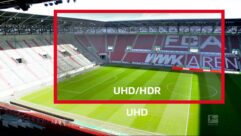Talk of AI is everywhere—often amorphous and nonspecific. It’s hyped and it’s feared, but in many ways, it’s not so new. In the AV world, software assisted intelligent technology has been with us for decades. The relationships between software and hardware for video and for sound reinforcement are powerful and complex. Those relationships shape the physical world, gathering threads of data to shape the experience of a three-dimensional space full of people. Maybe that’s not AI as we’re seeing it in popular culture and politics. But it certainly won’t become self-aware and end humanity.
But seriously, think about it—much of what we do in AV is more than simply applying software to a 2D experience, or a task that needs to be more efficient. We do have those capabilities—a tool like D-Tools System Integrator does grow ever more powerful for design and business support. Over the years of my career, remote monitoring, remote commissioning, SaaS, cloud, and other IT tools have been transformative to how work is done. There are predictive softwares now for many tasks that used to be time-consuming and sometimes inaccurate. So yeah, we’ve leveraged software for many things and they do save time, help us visualize, and organize. It would be a stretch to call that AI.
But since no one has yet quite figured out what AI completely is, I will just go on a limb and say that part of AI is multi-directional communication and origination—it takes disparate variables, synthesizes them, and sends them back into the mix.
In our industry, software can bend a three-dimensional space by changing the sound or the physical reality, creating an experience that wasn’t there before, and defining how people remember it. In the case of audio, there is the content creation and then there are the many intangibles of waves ricocheting in a space and the emotional results of that. That collision of forces changes reality, as anyone who has ever experienced it can attest. Shaping that experience is many things—it’s architecture, performance, mix, acoustics, audience, temperature, etc. But it is also computation in the hands of experts.
The same can be said for immersive video, which goes back to the ‘80s for me. Images are a way to create physical worlds and to conjure something greater than the parts and nearly as large as imagination. AV pros can come to the AI table knowing that we are already there.









